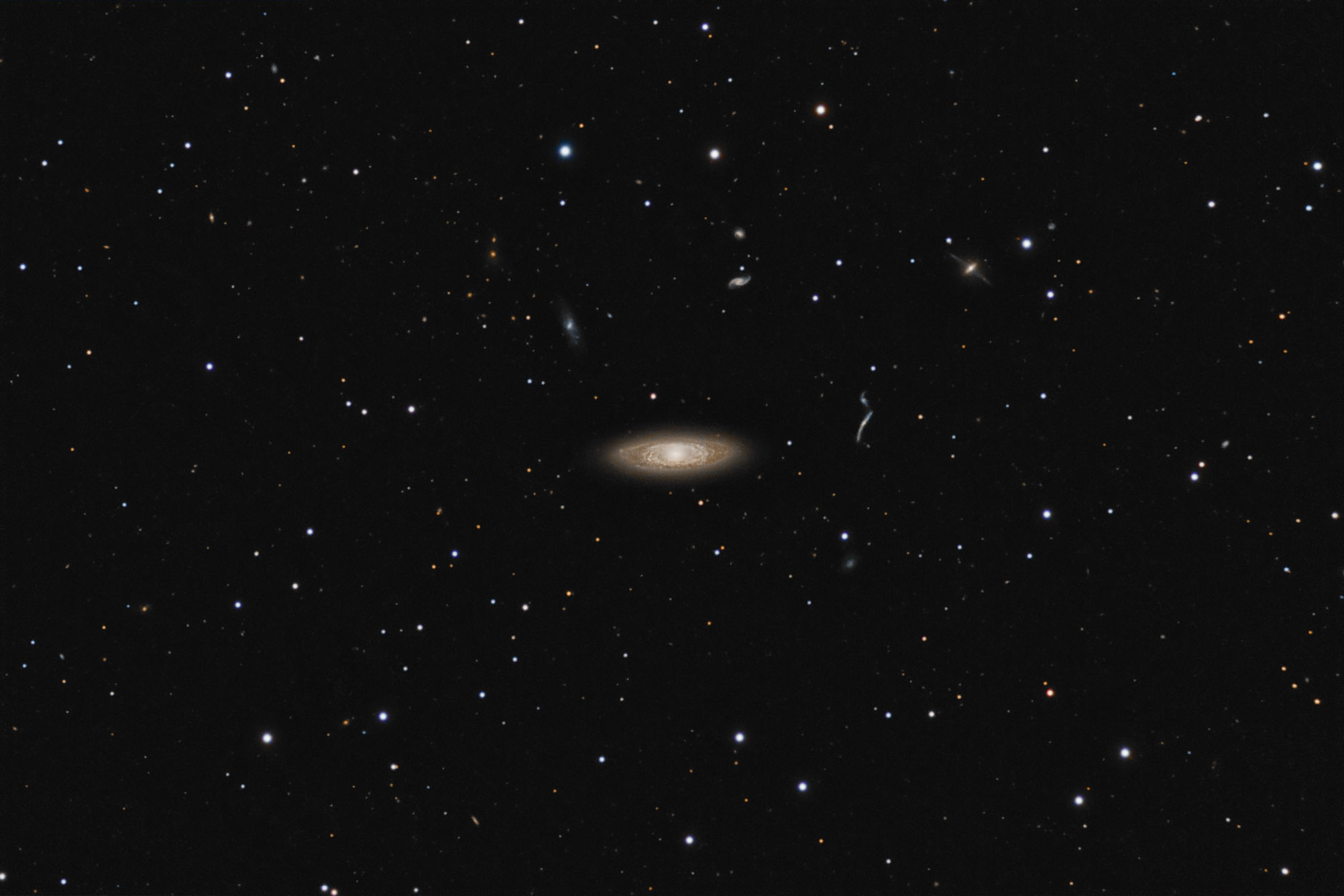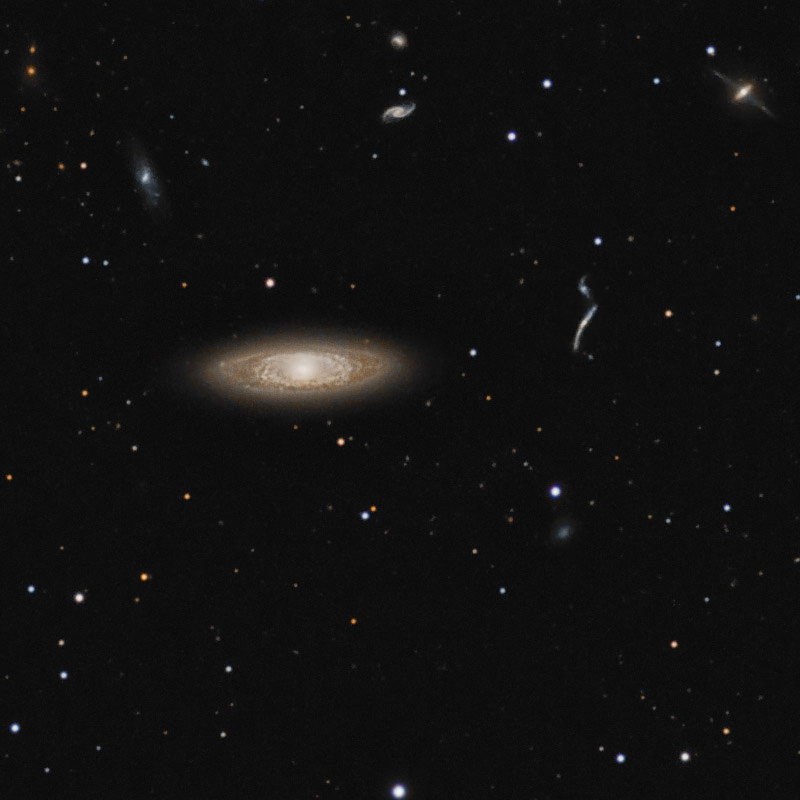| Description | Images |
Object name: NGC4448Designation(s): NGC4448, UGC07576, FGC171A, UGC07597, NGC 4448 is a rather red flocculent galaxy in northern Coma Berenices some 44 to 52 million light-years distant. It was discovered by William Herschel in 1785. It made my list initially because it was a Herschel 400 galaxy but when I looked into it I saw it was quite interesting and the field contained some really strange galaxies so it got bumped up to high priority last spring. My entry from April 23, 1985 in my Herschel 400 log isn't very encouraging. It reads: "Large, oval galaxy, brighter toward center, otherwise featureless, little detail seen. Seems larger than indicated." This image of it certainly shows plenty of detail. It is classified as SB(r)ab with HII emission from the very core. Otherwise it seems to lake new stars. I don't know if the red is dust or old red stars. Probably both. Redshift puts it at the nearer distance while the median of 5 widely differing measurements by 4 different methods gives a distance of 52 million light-years. They range from 31 to 153 million light-years. If the distance is assumed to be 50 million light-years its size is 70,000 light-years which is a reasonable size for it. Related Designation(s):2MASS J12274185+2841531, 2MASS J12281536+2837153, 2MASS J12281543+2837129, 2MASS J12282752+2840282, 2MASX J12274182+2841531, 2MASX J12281542+2837130, 2MASX J12282753+2840285, 2MASXi J1227418+284153, 2MASXi J1228154+283712, 2MASXi J1228154+283713, AKARI J1228148+283705, ASK 577053.0, CGCG 1225.8+2854, CGCG 158-113, CGCG 159-002, ECO 05998, ECO 06002, FGC 171A, FGC171A, GALEXASC J122741.85+284153.0 , GALEXASC J122815.39+283713.7 , HDCE 0706 NED069, HIJASS J1228+28, IRAS 12257+2853, IRAS F12257+2853, KUG 1225+289A, KUG 1225+289B, LDCE 0867 NED114, MAPS-NGP O_321_0659881, MAPS-NGP O_321_0717454, MCG +05-29-086, MCG +05-29-088 NED01, MCG +05-29-089, MCG +05-30-001, NGC 4448, NGC4448, NPM1G +28.0230, NSA 103039, NSA 103040, NSA 141447, PGC 040900, PGC 040988, PGC 041014, PRC A-04, SDSS J122741.85+284153.0, SDSS J122741.86+284153.1, SSTSL2 J122815.44+283713.7, UGC 07576, UGC 07591, UGC 07597, UGC07576, UGC07597, USGC U478 NED03, UZC J122815.4+283714, VV 279a NED01, [M98j] 173 NED10, | Permanent link: https://images.mantrapskies.com/catalog/NGC/NGC4448-UGC07576-FGC171A-UGC07597/NGC4448L4X10RGB2X10.JPG |


